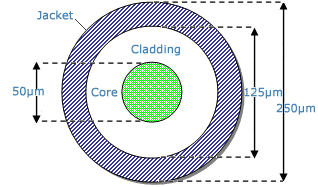Transparent Concrete or Light Transmitting Concrete
What is Transparent Concrete or Light Transmitting Concrete?
Transparent concrete also called as translucent concrete or light transmitting concrete is achieved by replacing aggregates with transparent alternate materials. The bonding material in transparent concrete may be able to transmit light by using clear resins the concrete mix. Use of optical fibers and fine concrete also used as transparent concrete.
Transparent concrete was originally developed in 2001 by a Hungarian architect Aronlosonzi by using glass fibers. Transparent concrete is produced by mixing 4% to 5% (by volume) optical fibers in the concrete mixture. This concrete has less weight compared to original concrete.
Materials for Transparent Concrete
Transparent concrete is manufactured by using combination of fiber optics and fine concrete. These fibers blend into the concrete like any other aggregates. These optical fibers can transmit light from natural and artificial sources into spaces enclosed by the translucent concrete panels. The main reason for using optical fiber in concrete is that it can transmit light even an incident angle greater than 600.
Optical fiber consists of three layers called as core, cladding and buffer coating or jacket. The light is transmitted through the core of the optical fiber.

Fig: Cross-Section of Optical Fiber
Transparent concrete is manufactured using fine materials only. It does not contain coarse aggregates. This concrete can have the compressive strength of that of high strength concrete around 70 MPa ( 10,000 psi).

Fig: Light Transmitting Concrete
Materials used:
Cement: As the optical fiber is only responsible for transmission of light, there is no special cement required. So, ordinary Portland cement is used for transparent concrete.
Sand: Since the transparent concrete is manufactured only using fine materials, the size of sand should pass through 1.18mm sieve. The sand should be free from any impurities such as vegetation, large stones etc.
Water: Water to be used for transparent concrete should be of drinking water quality, free from any impurities.
Optical fibers: Optical fibers in the range of 4 to 5% by volume is used for transparent concrete. Thickness of the optical fibers can be varied between 2 µm and 2 mm to suit the particular requirements of light transmission.
Fig: Transparent Concrete Wall
Advantages of Transparent Concrete:
The main advantage of transparent concrete is that it can transmit light. There, it can be used to make green buildings. Since it can transmit light from natural as well as artificial sources, the building can have fewer lights to meet its demand for lighting. Thus saving huge energy cost.
Transparent concrete uses sunlight as source of light instead of electrical energy and reduces power consumption. This concrete can also be used cold countries to transmit heat with sunlight.

No comments:
Post a Comment